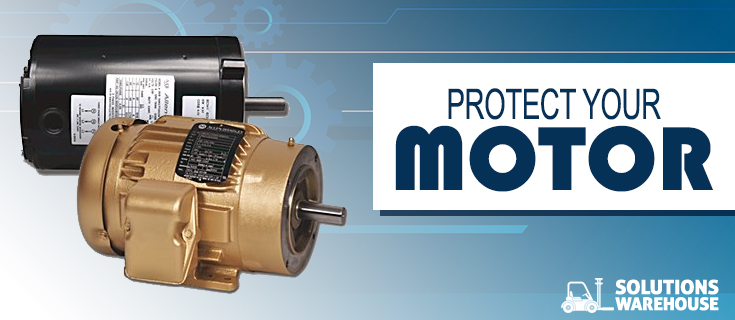 This post originally appeared in The Journal From Rockwell Automation.
This post originally appeared in The Journal From Rockwell Automation.
Proper motor protection and a condition monitoring solution can help you determine how and when a motor might fail so you can pre-empt the problem.
We’ve all done it — pushed a product a little too hard. A garbage disposal, for example. If we put something too big or too tough down that drain and hear the pained whir of a motor fighting for life, we know to shut it down and wait. And if we’re not fast enough, a safety switch will do the job for us, preventing overheating. Do that little maneuver too often, though, and you’ve shortened the life of your disposal. The same thing happens with the motor powering a mechanical load. Push too hard, too often, and you’ve got the potential for unforeseen downtime while the overheated motor shuts down, cools off and gets ready to start again. Older motor protection technology will protect a motor from overheating by shutting the motor down — but that’s reactive (after the problem) rather than proactive. Production stops while the motor recovers, potentially risking hundreds of thousands of dollars in revenue. Now, instead of an electro-mechanical solution, some electronic-based options are available that monitor the motor electrically and mechanically to help you predict how and when a motor might fail so you can preempt the problem. If the motor does fail, the diagnostics will help you resolve the problem as quickly as possible. The secret of electronic overload relays for electrical motor protection and condition monitoring equipment for mechanical protection is in how information about what’s happening inside the motor is communicated to the outside world. Together, they can more accurately predict when a motor might fail so you can make a decision about how to proceed. In many cases, every second counts. For example, say you’re mixing cement. You have 30 seconds left in the process and the motor will trip in 45. Now you know: You can keep going without risking the batch or the motor. You have better information and with it, you can make better decisions. This is only one example of the data available. If you’re on an energy-management agreement and several times a year your utility wants you to cut usage, with data provided by the electronic overload relay, you can quickly assess how much power (kW) each motor is using and shut down non-critical loads. This advancement is especially useful if you’re now using a common form of motor maintenance — the smart phone. It happens too often — you don’t know a motor is tripped until you walk past it, followed by a call to maintenance. This all takes time. Instead, electronic-based motor protection can send a signal to the control station and a message to maintenance before the shutdown. If the motor does trip, all the data about the event is captured for examination to help prevent a repeat in the future. Best of all, electronic overload relays and condition monitoring solutions are a fraction of the price of previous technology. Look at your electrical motor applications. Are any process-critical? If so, what is the cost of down time? Find a motor protection and condition monitoring solution that suits your application and prevents unplanned production downtime. This post originally appeared in The Journal From Rockwell Automation.








